Cemetery Park Full of Curves and Spirals Celebrates Our Connection to Nature
Cemeteries are usually thought of as sad places — maybe even creepy ones, which says a lot about our societal relationship with death. Might our collective ability to healthily process grief and loss improve if we changed our perception, looking at cemeteries as spaces for connection to each other, our own mortality, and the cycles of nature?
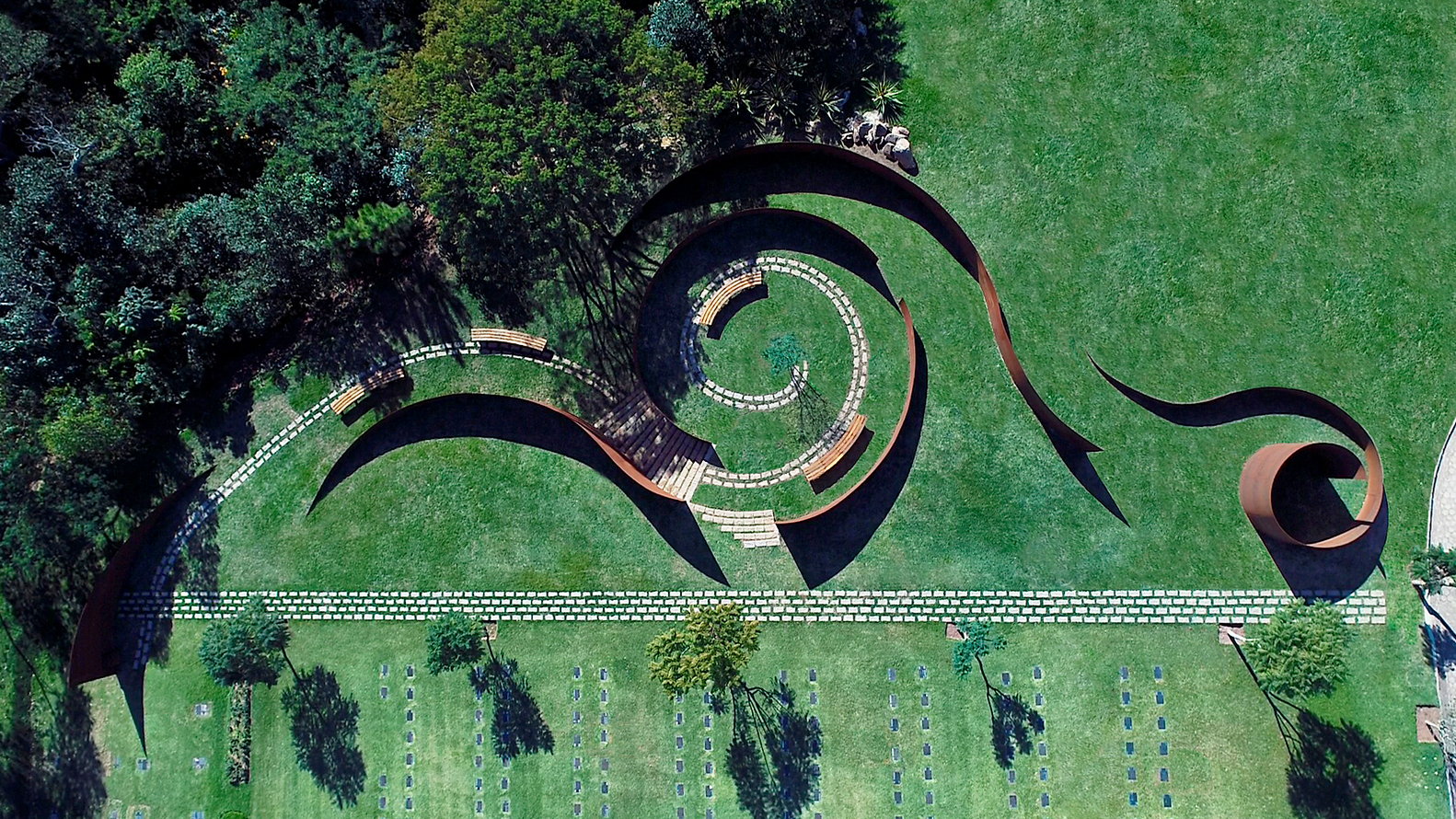
There’s certainly no need for cemeteries to be morbid. They could be pleasant to visit, or even joyful. They could help us honor the lives of our loved ones while reminding us that we are still alive. One such place is the Memorial Cemetery Parque das Cerejeiras in Jardim Angela, Brazil. Designed by Crisa Santos Arquitectos, the cemetery strikes alternately peaceful and playful tones by combining spaces of quiet reflection with bold, sculptural elements in dialogue with the surrounding park.
Lead architect Crisa Santos worked with spiritual leaders, psychiatrists, psychologists, and geriatricians to gain a deeper understanding of the grieving process, aiming to support and care for people in mourning. Drawing on extensive research conducted by the Union of Cemeteries and Private Crematoriums of Brazil, which has polled people in mourning on what they needed most, Santos created an interactive space where people can “live in their grief in its entirety, and as lightly as possible.”
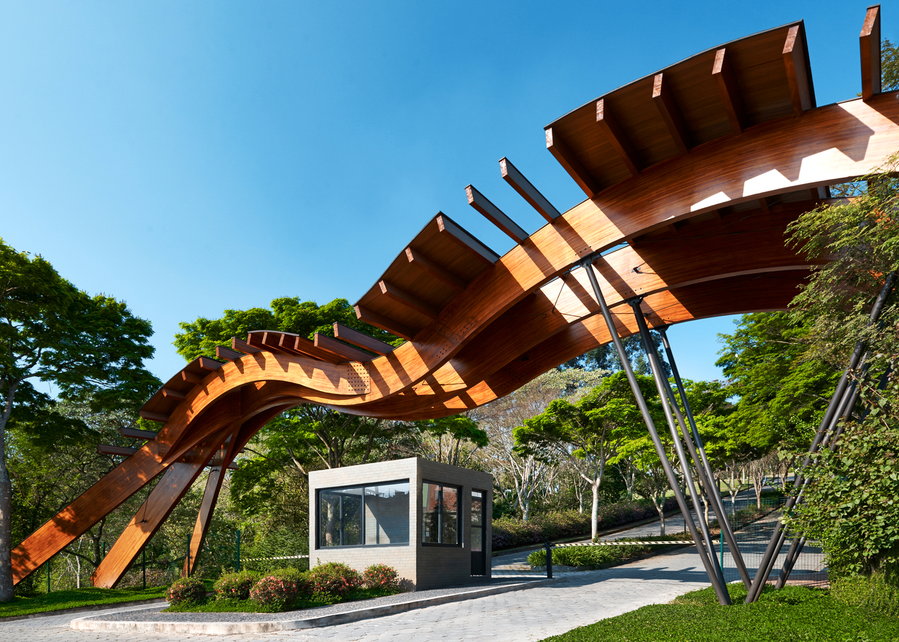
That research resulted in a space that emphasizes connections to sacred spaces, ascent to the heavens, rising souls, and a sense of being rooted in nature. It starts with the Parque de Cerejeiras entrance, a parametric structure made of wood that, according to the architect, “refers to the movement of a flight to a sacred place.”
The standout element of the cemetery is its most symbolic. “Eternity Square” is formed by several sections of steel plates arranged in a spiral, “bringing a narrative that makes an allegory to all phases of life: birth, adolescence, adulthood, generation of children, maturity, and passage.”

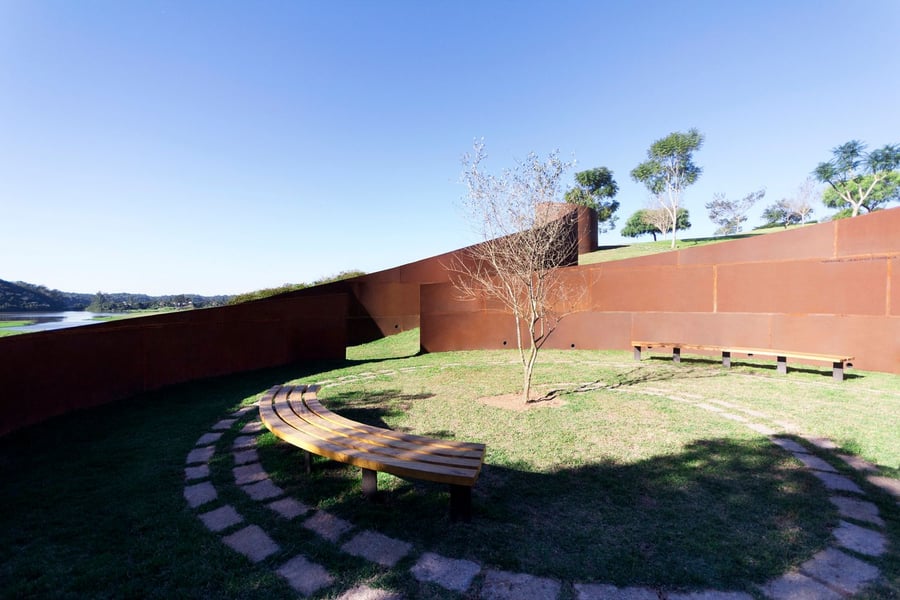

The curves represent the chapters of this narrative, slowly unfurling with grass underfoot and the sky overhead. There’s a weight and gravity to it all, but also a lightness that calls to mind the fleeting nature of our time on Earth.
The firm adds that: “Crisa Santos has a unique peculiarity on developing projects focusing on neuroarchitecture, which uses science to create projects that offer sensations and perceptions, causing emotions to users. [It] aims to increase awareness and understanding of the impacts of architecture on the brain and human behavior. An example of this is the Parque das Cerejeiras’ revitalization project, located in Jardim Ângela, South Zone of São Paulo.”

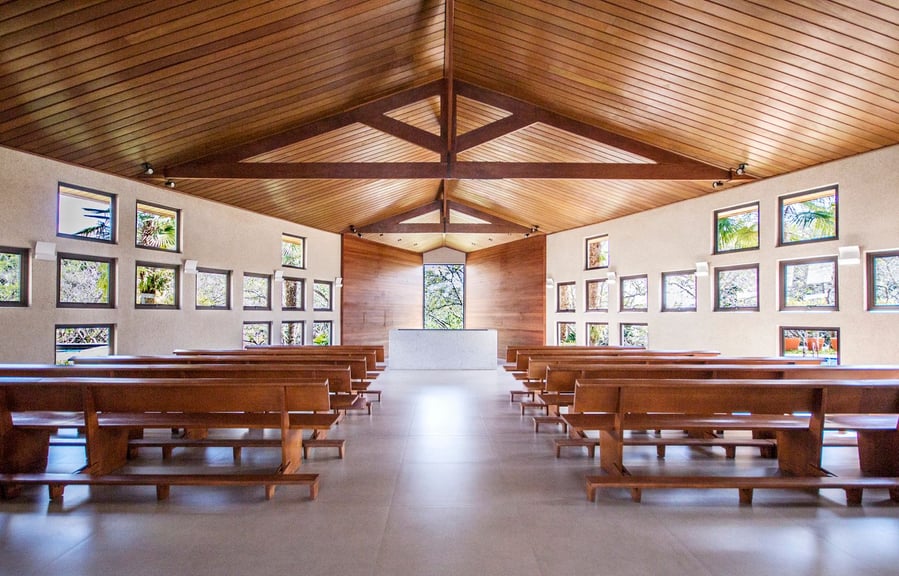
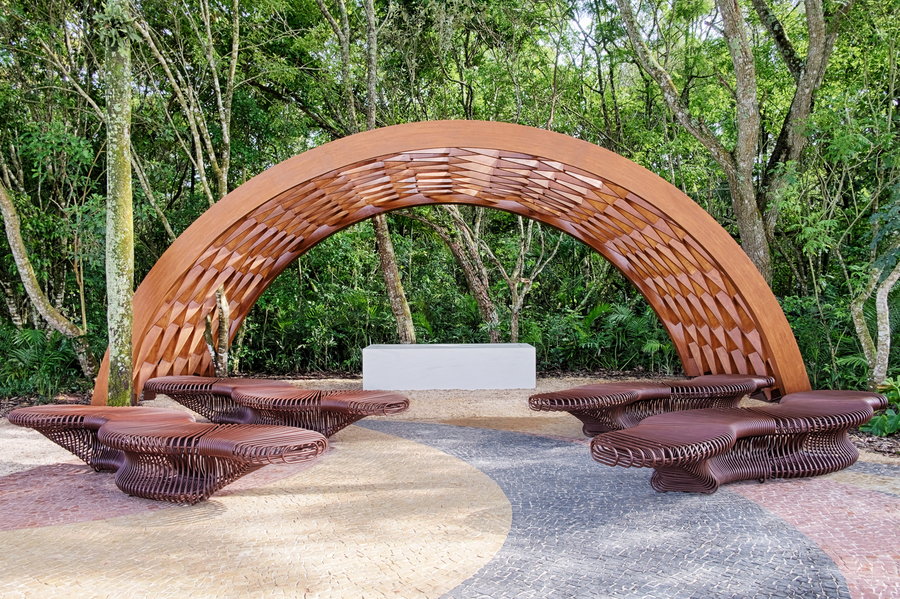
“A reference in the capital of São Paulo, the cemetery, with 300,000 square meters, has architecture embraced by nature in a perfect symbiosis, reframing the contact of human beings with their most instinctive sensations in order to reestablish grief in a more natural way through the practice of biophilia. Using parametric architecture for some structures, in addition to the use of outdoor environments, Crisa Santos designed this complex aimed at the public of the peripheral neighborhoods of the Zul region of São Paulo.”
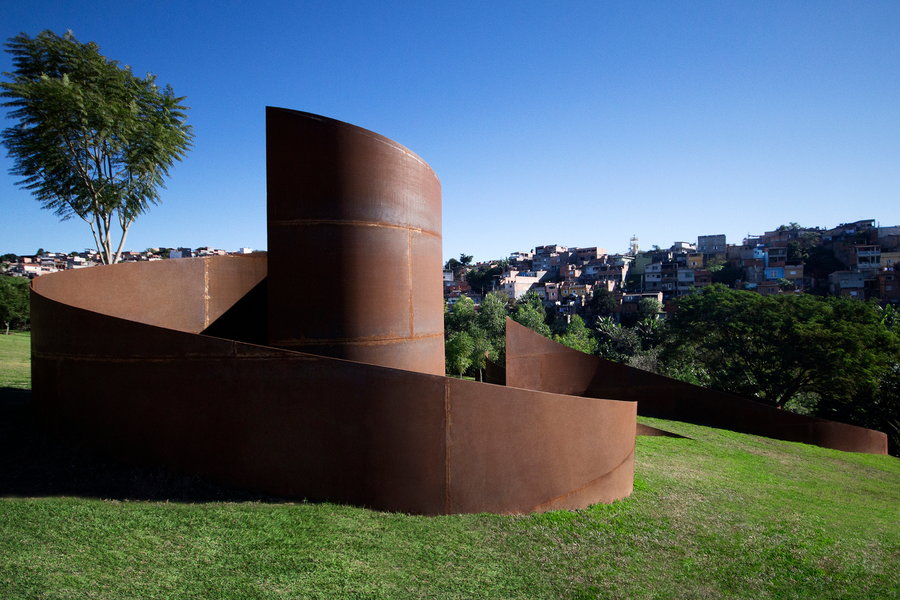
A lot of thought went into this project, and it shows. Would you prefer to reflect on your deceased loved ones in a space like this, or are you in favor of more traditional cemeteries?




